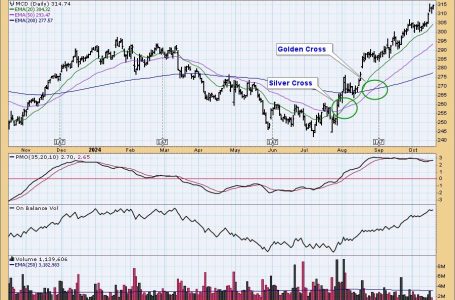Elon Musk quietly donates ‘very substantial’ amount to PAC to canvass Hispanic voters
IMF maintains growth outlook for PHL

By Beatriz Marie D. Cruz, Reporter
THE PHILIPPINES is expected to be one of the fastest-growing economies in Southeast Asia through 2029, according to the International Monetary Fund (IMF).
In its latest World Economic Outlook (WEO), the IMF kept the Philippine gross domestic product (GDP) growth outlook at 5.8% this year, which is below the government’s 6-7% target. This is the same forecast given after the Article IV Consultation Mission briefing earlier this month.
This would make the Philippines the second-fastest growing economy in Southeast Asia, behind Vietnam (6.1%) and ahead of Cambodia (5.5%), Indonesia (5%), Malaysia (4.8%), Laos (4.1%), Timor-Leste (3%), Thailand (2.8%), Singapore (2.6%), Brunei (2.4%) and Myanmar (1%).
For 2025, the IMF kept its GDP growth projection for the Philippines at 6.1%, which is lower than the government’s 6.5-7.5% goal.
The Philippines and Vietnam are expected to post the fastest growth in the region in 2025, ahead of Cambodia (5.8%), Indonesia (5.1%), Malaysia (4.4%), Laos (3.5%), Timor Leste (3.1%), Thailand (3%), Brunei (2.5%), Singapore (2.5%) and Myanmar (1.1%).
“Growth in 2024 and 2025 is driven by a pickup in domestic demand, supported by gradual monetary policy easing,” a representative of the IMF said in an e-mail.
“Consumption growth will be buoyed by lower food prices and the upcoming midterm elections, while investment growth is expected to pick up on the back of a sustained public investment push, and gradually declining borrowing costs.”
Philippine growth will be faster than emerging and developing Asia, which is projected to expand by 5.3% and 5% in 2024 and 2025, respectively.
“Emerging Asia’s strong growth is expected to subside from 5.7% in 2023 to 5% in 2025,” the IMF said, adding that this reflects the sustained slowdown in China and India.
“Absent a strong drive for structural reforms, output growth is expected to remain weak over the medium term.”
The IMF sees growth in the region to be supported by sustained demand for semiconductors and electronics, as well as increasing investments in artificial intelligence (AI).
The IMF also expects Philippine GDP to expand by 6.3% until 2029, still the fastest in Southeast Asia, ahead of Cambodia (6%) and Vietnam (5.6%).
“Growth over the medium term at 6.3% is expected to be supported by investment, on the back of an acceleration in the implementation of PPP (public-private partnership) projects and FDI (foreign direct investments), following recent regulatory and administrative reforms,” the IMF representative said.
However, the IMF representative said potential risks that could weigh on economic growth include new supply shocks, escalating geopolitical tensions, tighter-for-longer monetary policy and an unexpected slowdown in major economies.
“Domestically, the pickup in private investment may be weaker than projected if reform momentum stalls or payoffs from reforms generate lower-than-expected returns. On the upside, the pickup in investment and productivity gains from reforms could be higher,” the IMF representative said.
Meanwhile, the IMF maintained the Philippine inflation forecast at 3.3% in 2024, which is above the Bangko Sentral ng Pilipinas’ (BSP) revised inflation projection of 3.1%.
For 2025, the IMF sees inflation at 3%, which is below the BSP’s 3.2% projection.
‘ALMOST WON’The IMF said global growth would likely remain “stable yet underwhelming,” as it kept GDP growth projections at 3.2% this year and next year.
It noted the global economy has remained “unusually resilient” and avoided a recession.
“The global battle against inflation has largely been won, even though price pressures persist in some countries,” IMF Economic Counsellor Pierre-Olivier Gourinchas said in the WEO report.
Global inflation is forecast to reach 3.5% by end-2025, slightly below the 3.6% average between 2000 and 2019.
In emerging Asia, inflation is projected at 2.1% this year and 2.7% in 2025, “in part thanks to early monetary tightening and price controls in many countries in the region,” the IMF said.
“While the global decline in inflation is a major milestone, downside risks are rising and now dominate the outlook: an escalation in regional conflicts, monetary policy remaining tight for too long, a possible resurgence of financial market volatility with adverse effects on sovereign debt markets, a deeper growth slowdown in China, and the continued ratcheting up of protectionist policies,” he said.
With the return of inflation to near central bank targets, Mr. Gourinchas said a policy triple pivot is now needed.
The pivot on monetary policy has started, as major central banks began cutting policy rates, he said. However, vigilance is key amid a resurgence in inflationary pressures due to high food prices and supply disruptions, he added.
The Philippine central bank began its easing cycle in August with a 25-basis-point (bp) cut, followed by another 25-bp reduction at its Oct. 16 meeting. This brought the target reverse repurchase (RRP) rate to 6%.
BSP Governor Eli M. Remolona, Jr. has signaled another possible 25-bp rate cut at the Monetary Board’s last meeting for the year on Dec. 19.
Mr. Gourinchas said the second pivot is on fiscal policy, as now is the time “to stabilize debt dynamics and rebuild much-needed fiscal buffers.”
“The third pivot — and the hardest — is on structural reforms. Much more needs to be done to improve growth prospects and lift productivity, as this is the only way we can address the many challenges we face: rebuilding fiscal buffers, aging and declining populations in many parts of the world, young and growing populations in Africa in search of opportunity, tackling the climate transition, increasing resilience, and improving the lives of the most vulnerable,” he said.










